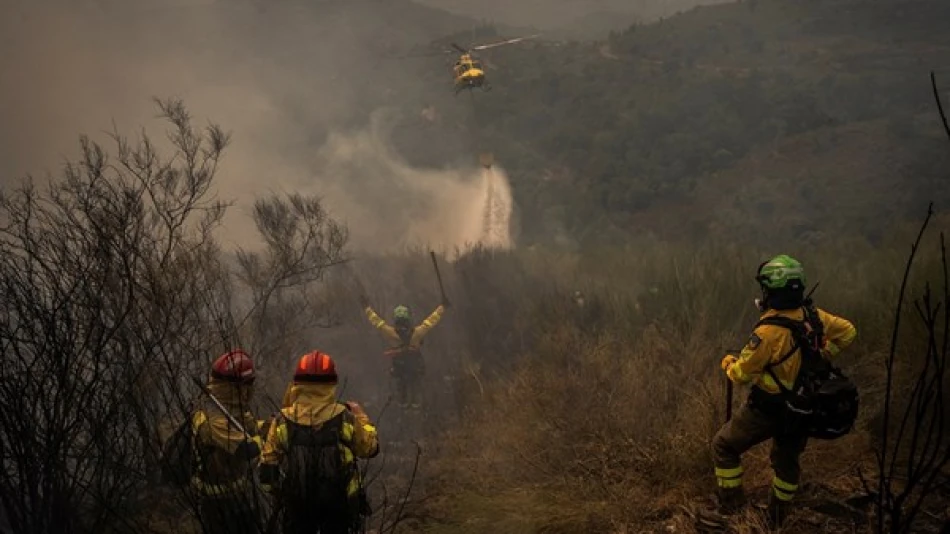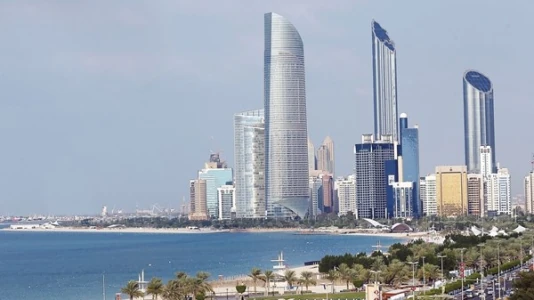
Devastating Wildfire Ravages Over 1 Million Hectares Across Europe
Europe's Wildfire Crisis Reaches Historic Peak as Climate Patterns Shift
The European Union has recorded its worst wildfire season since official tracking began in 2006, with flames consuming over one million hectares of land this year. This environmental catastrophe, concentrated heavily in Spain and Portugal, signals a dangerous acceleration in climate-driven disasters that could reshape how Europe manages its forests and agricultural lands.
Record-Breaking Destruction Across the Continent
According to the European Forest Fire Information System, wildfires have burned through 1.028 million hectares of EU territory as of Tuesday—an area larger than Cyprus and exceeding any previously recorded annual total. The scale represents a stark milestone that underscores Europe's growing vulnerability to extreme weather events.
Spain and Portugal bore the brunt of the destruction, accounting for approximately two-thirds of the total burned area. This concentration in the Iberian Peninsula reflects the region's particular susceptibility to Mediterranean climate extremes, which have intensified significantly over the past decade.
The Perfect Storm: Heat Waves and Fire Outbreaks
Data reveals a sharp spike in wildfire activity between August 5-19, coinciding with a brutal 16-day heat wave that gripped the Iberian Peninsula. This period demonstrates how sustained high temperatures create ideal conditions for rapid fire spread, turning routine blazes into uncontrollable infernos.
The heat wave, which ended last week, left a trail of devastation beyond the burned forests. At least eight people died in Spain and Portugal, while authorities were forced to suspend railway services and close major roadways. These disruptions highlight how wildfire impacts extend far beyond environmental damage, affecting critical infrastructure and economic activity.
Climate Change Accelerates Fire Risk
The record-breaking season fits within a broader pattern of climate-driven environmental changes across Europe. Rising temperatures, prolonged drought periods, and shifting precipitation patterns are creating conditions that make wildfires more frequent and severe than historical norms.
This trend mirrors developments in other fire-prone regions globally. California has experienced similarly devastating seasons in recent years, while Australia's 2019-2020 "Black Summer" fires burned an area nearly the size of the entire United Kingdom. Europe's current crisis suggests that no continent remains immune to these escalating risks.
Prevention Measures Face Growing Challenges
While traditional fire prevention strategies—such as clearing dry vegetation and creating firebreaks—remain important tools, their effectiveness appears increasingly limited against the scale of current blazes. The sheer intensity and speed of modern wildfires often overwhelm conventional containment methods.
European policymakers now face difficult decisions about resource allocation and land management strategies. The economic cost of fighting these fires, combined with agricultural losses and infrastructure damage, creates mounting pressure for more aggressive climate adaptation measures.
Economic and Environmental Implications
The wildfire crisis carries significant implications for European agriculture, tourism, and carbon reduction goals. Burned forests release stored carbon back into the atmosphere, undermining climate targets, while damaged agricultural land threatens food security and rural economies.
Insurance markets are already responding to increased wildfire risks, with some providers raising premiums or restricting coverage in high-risk areas. This trend could accelerate regional economic disparities, as Mediterranean countries face higher costs for both prevention and recovery.
The record-breaking 2022 season may prove to be a watershed moment for European environmental policy, forcing a more comprehensive approach to climate adaptation that goes beyond traditional fire management to address the underlying drivers of extreme weather events.
 Layla Al Mansoori
Layla Al Mansoori







